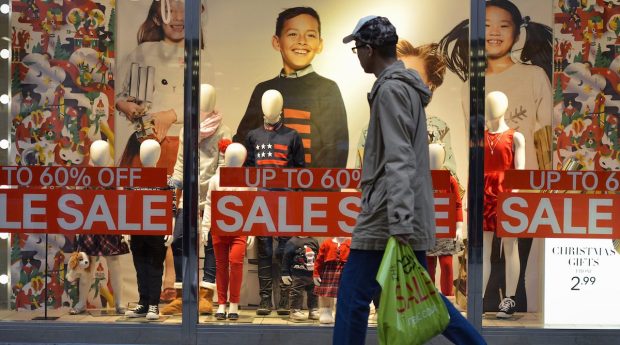Retail Report’s Discretionary Spending Pullback Signals Holiday Headwinds

Consumers spent more last month than some observers expected.
What remains to be seen is whether that trend can continue. Commentary from Target Wednesday (Nov. 16) and PYMNTS’ own data cast some significant doubt over that sustainability.
As reported Wednesday,
United States retail sales rose 1.3% in October from the month before, according to data release Wednesday by the Census Bureau. That’s better than the 1% analysts and economists had estimated.
Drilling down a bit into the data, spending on gasoline was up 4.1% from a month ago, and spending on food and beverages was up 1.4%. Inflation plays a role here, making everything more expensive.
And because those everyday items and services are more expensive, something’s got to give, as they say. Discretionary spending is already taking a hit, right into the teeth of the critical holiday spending season, and it looks set to hit brick-and-mortar firms the hardest.
We’re seeing some “give” in the government’s own data. Month-over-month spending at electronics and appliance stores was down 0.3%, spending at general merchandise stores slipped 0.2% over the same timeframe, spending on clothing was flat, and spending on sporting goods, hobbies and books was off 0.3%.
Discretionary Spending: Trouble Behind and Trouble Ahead
The data is a snapshot in time, a rearview mirror look at where consumers allocated their dollars during a single month.
But Target’s commentary Wednesday morning that it saw a “precipitous decline” in consumer spending through the month and into November underscores that October’s discretionary spending trends are no mere blip. And they don’t augur well for companies that are not named Amazon or Walmart.
One interesting data point: October sales at non-store retailers, widely taken as a proxy for eCommerce spending, was up 1.2% month on month. Not exactly a splurge, but maybe a bit of saving grace for Amazon, which has been leading the likes of Walmart in eCommerce spend, with about a 45% share.
Walmart, in its own earnings report Tuesday night (Nov. 15), said that there’s some resilience in grocery spending. Management said Walmart continues to gain grocery market share from households across income demographics, with nearly three quarters of the share gain coming from those exceeding $100,000 in annual income.
For the rest of the retail world, things look a bit less sanguine. PYMNTS has found that in the paycheck-to-paycheck economy, now extending to more than 60% of consumers, only about a quarter of consumers went ahead and bought toys, games or hobbies.
Another near-term casualty may be retail subscriptions. PYMNTS’ “Subscription Commerce Conversion Index,” released Wednesday morning, showed that 43% of subscribers have doubts they will renew one or more of their subscriptions. Thirty-four percent of those canceling subscriptions said they are doing so because they want to reduce expenses. And here, too, there’s a slight silver lining for Amazon, as the data showed that consumers are “consolidating” their subscription activity through Amazon Subscribe and Save, while jettisoning other providers.
For retailers, the hoped-for holiday cheer has now become a case of holiday fear.
For all PYMNTS retail coverage, subscribe to the daily Retail Newsletter.
